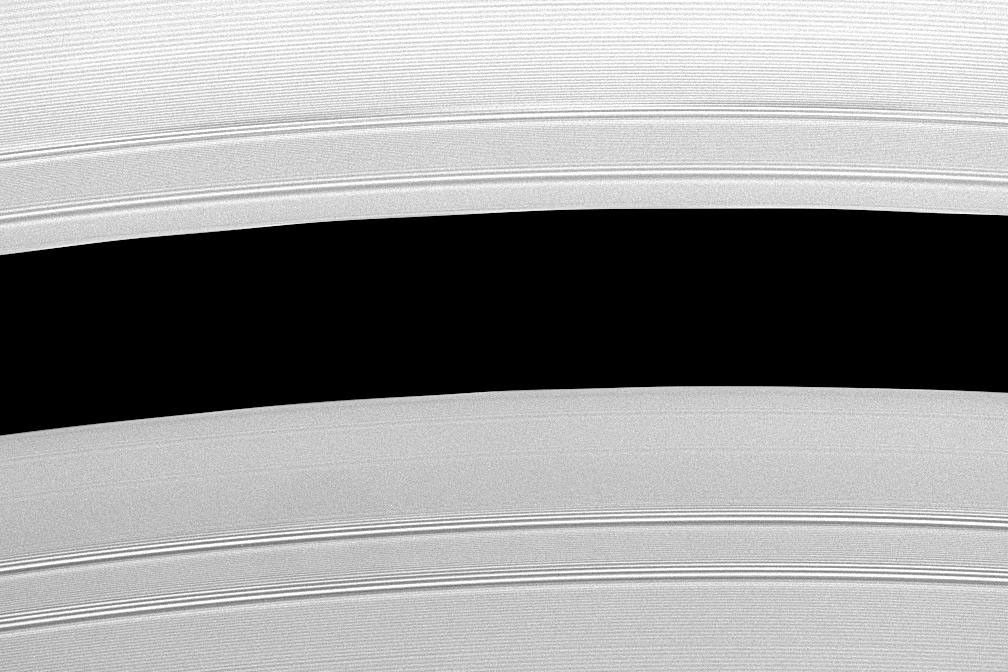Resonant Effects
| PIA Number | PIA07533 |
|---|---|
| Language |
|
This view shows Saturn's Encke Gap (325 kilometers, or 200 miles wide) whose center is 133,590 kilometers (83,010 miles) from Saturn. This division in the rings is home to the small moon called Pan (20 kilometers, or 12 miles across).
The four bright bands -- two on either side of the gap -- are density waves generated by gravitational resonances with Prometheus and Pandora. The rest of the ring structures seen here are "wakes."
Like a placid lake surface disturbed by a boat, ring particles near the gap have their orbits perturbed by Pan's gravity, organizing themselves into wakes that stream away from the moon. The spacing of these wakes (their wavelength) increases with distance from the gap, as can be seen here.
Unlike most waves in the rings, wakes do not propagate or sustain themselves; rather, they preserve the memory of a single event (a passing of Pan in its orbit). These ripples are surprisingly persistent. In this image, for example, Pan is 120 degrees farther around the planet from this location, and the wakes here were generated as long as four months before the image was taken. Scientists are working to revise models of how ring wakes evolve using data from Cassini.
The image was taken in visible light with the Cassini spacecraft narrow-angle camera on May 20, 2005, at a distance of approximately 332,000 kilometers (206,000 miles) from Saturn. The image scale is 2 kilometers (1 mile) per pixel.
The Cassini-Huygens mission is a cooperative project of NASA, the European Space Agency and the Italian Space Agency. The Jet Propulsion Laboratory, a division of the California Institute of Technology in Pasadena, manages the mission for NASA's Science Mission Directorate, Washington, D.C. The Cassini orbiter and its two onboard cameras were designed, developed and assembled at JPL. The imaging team is based at the Space Science Institute, Boulder, Colo.
For more information about the Cassini-Huygens mission visit http://saturn.jpl.nasa.gov . The Cassini imaging team homepage is at http://ciclops.org .
Credit: NASA/JPL/Space Science Institute






























